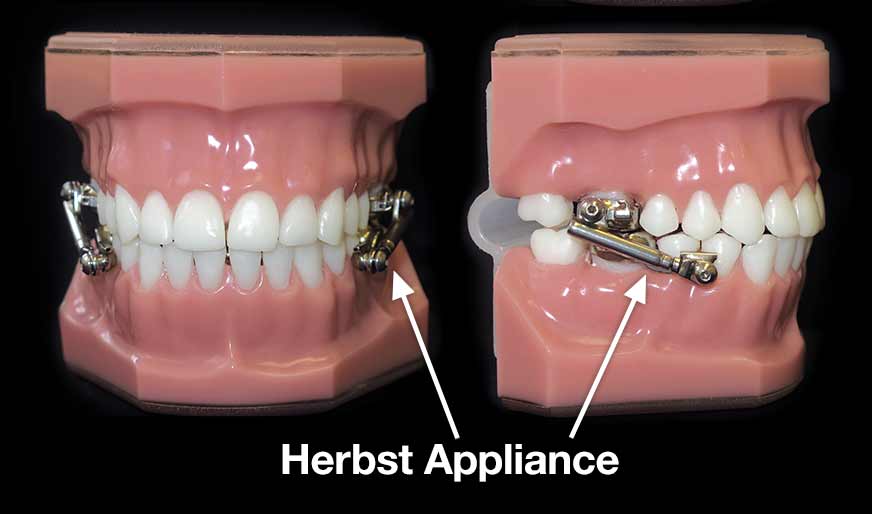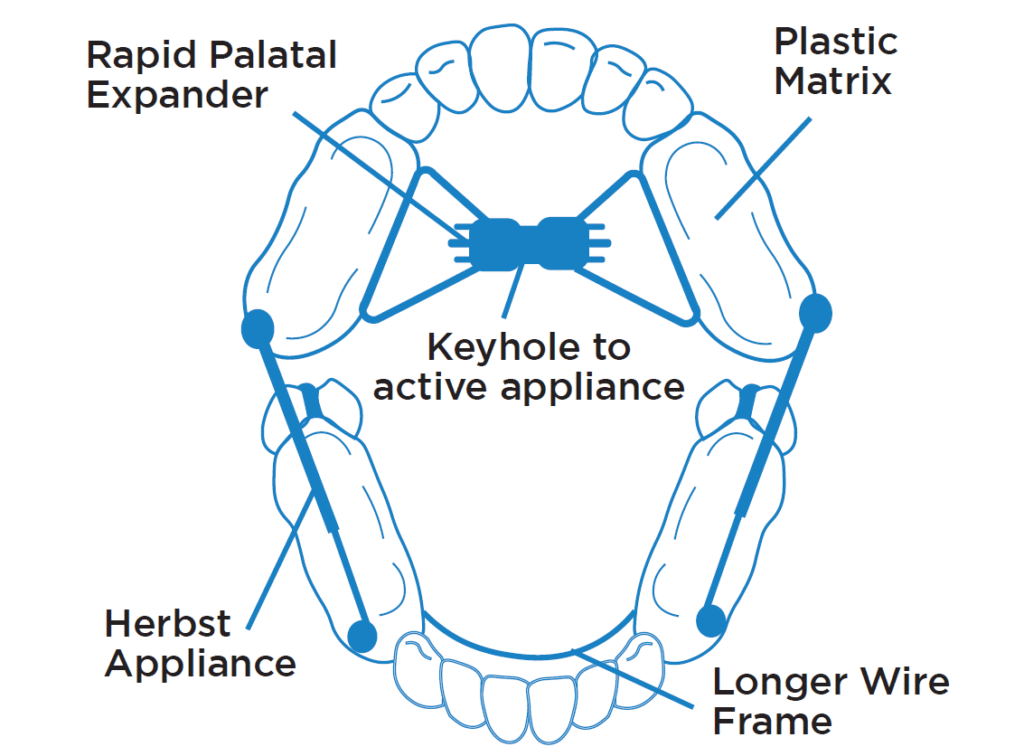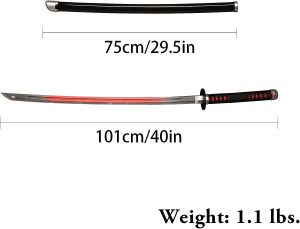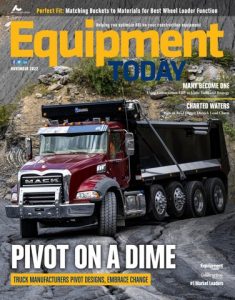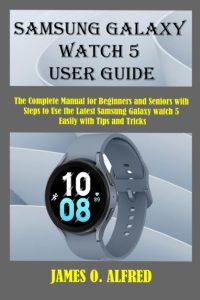Contents
- What is a Herbst Orthodontic Appliance?
- Types of Jaw Misalignment
- Benefits of Using a Herbst Orthodontic Appliance
- Evaluating Eligibility for Herbst Orthodontic Treatment
- Step-by-Step Process of Getting a Herbst Appliance
- Possible Discomfort or Side Effects
- Tips for Managing Discomfort and Adjusting to the Appliance
- Duration of Herbst Orthodontic Treatment
- Potential Alternatives to Herbst Orthodontic Treatment
- Cost Considerations and Insurance Coverage
Imagine finally finding a solution to your jaw misalignment struggles – a guide that promises to correct your condition and give you the smile you’ve always dreamed of. Look no further than the Herbst Orthodontic Appliance. This innovative product is designed to address jaw misalignment and provide a comprehensive solution to improve your oral health. With the Herbst Orthodontic Appliance, you can take control of your smile and confidently embrace a happier, healthier you. Say goodbye to discomfort and hello to a transformed jaw alignment with this remarkable guide.
What is a Herbst Orthodontic Appliance?
Definition and Purpose
A Herbst orthodontic appliance, also known as a Herbst appliance or simply Herbst, is a specialized orthodontic device used to correct jaw misalignment. It consists of custom-made metal frameworks, wires, and connectors that are fitted to the upper and lower teeth. The primary purpose of a Herbst appliance is to align the jaws properly and improve the bite functionality in individuals with Class II or Class III malocclusion.
How Does it Work?
The Herbst appliance works by incrementally advancing the lower jaw forward and influencing the growth and development of the facial bones. This forward movement allows the upper and lower jaws to achieve a more harmonious and balanced relationship, correcting the underlying cause of the jaw misalignment. By directing the growth of the jaws, it helps achieve a proper bite, improved facial symmetry, and enhanced chewing efficiency.
Components of a Herbst Orthodontic Appliance
A typical Herbst appliance consists of several components designed to work together in correcting jaw misalignment. These components include:
- Upper and lower metal frameworks: These are customized metal pieces that attach to the upper and lower teeth, providing the foundation for the appliance.
- Adjustable rods or connectors: These are adjustable rods or connectors that connect the upper and lower frameworks, allowing for the controlled advancement of the lower jaw.
- Bite pads or blocks: These are small pads or blocks attached to specific teeth surfaces that guide the alignment of the upper and lower jaws.
- Anchorage screws: In some cases, additional anchorage screws may be used to provide stability and precise control over the movement of the jaws.
Types of Jaw Misalignment
Class I Malocclusion
Class I malocclusion refers to a relatively normal bite relationship where the upper teeth slightly overlap the lower teeth. It is considered a mild form of misalignment and may not require treatment with a Herbst appliance.
Class II Malocclusion
Class II malocclusion, also known as an overbite, occurs when the upper jaw protrudes forward, causing the upper front teeth to significantly overlap the lower front teeth. This type of misalignment is commonly corrected using a Herbst appliance.
Class III Malocclusion
Class III malocclusion, also called an underbite, is characterized by the lower jaw protruding forward, causing the lower front teeth to overlap the upper front teeth. A Herbst appliance can also be an effective treatment option for this type of jaw misalignment.
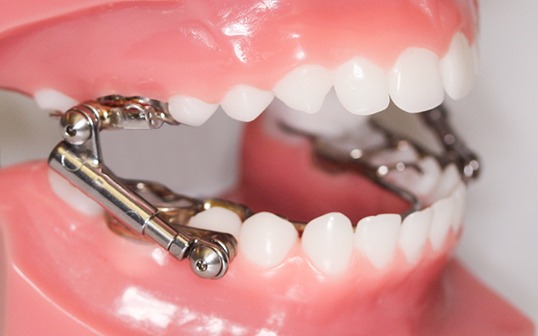
Benefits of Using a Herbst Orthodontic Appliance
Effective Correction of Jaw Misalignment
A major benefit of using a Herbst appliance is its effectiveness in correcting jaw misalignment. By gradually advancing the lower jaw forward, it helps align the upper and lower jaws, improving the bite relationship and restoring proper function.
Improved Facial Symmetry
Jaw misalignment can often result in facial asymmetry, with one side appearing more pronounced than the other. The use of a Herbst appliance can help promote facial symmetry by aligning the jaws and achieving a balanced facial profile.
Reduced Risk of Temporomandibular Joint Disorders
Jaw misalignment can put excessive strain on the temporomandibular joints (TMJ), leading to TMJ disorders and associated symptoms such as jaw pain, headaches, and difficulty in opening and closing the mouth. By correcting the underlying misalignment, a Herbst appliance can help reduce the risk of TMJ disorders and alleviate related symptoms.
Enhanced Bite Function and Chewing Efficiency
A well-aligned bite allows for proper functioning of the teeth and optimal chewing efficiency. With a corrected bite achieved through the use of a Herbst appliance, individuals can experience improved bite function and enjoy more efficient chewing and digestion.
Evaluating Eligibility for Herbst Orthodontic Treatment
Initial Orthodontic Examination
The first step in evaluating eligibility for Herbst orthodontic treatment is a comprehensive orthodontic examination. During this examination, your orthodontist will assess various aspects of your oral health, including the alignment of your teeth, the relationship between your jaws, and any existing jaw misalignment. This evaluation helps determine if a Herbst appliance is the appropriate treatment option for you.
Assessment of Jaw Misalignment Severity
The severity of jaw misalignment plays a crucial role in determining eligibility for Herbst orthodontic treatment. Your orthodontist will evaluate the degree of misalignment, considering factors such as the extent of the overbite or underbite and the overall harmony between the upper and lower jaws. The assessment helps determine the most suitable treatment approach to achieve optimal results.
Evaluation of Dental and Skeletal Structures
Apart from jaw misalignment, the condition of your dental and skeletal structures will also be evaluated to evaluate your eligibility for Herbst orthodontic treatment. This assessment includes examining the health of your teeth, gums, and jaws, as well as considering any existing dental or orthodontic issues that may affect the effectiveness of the treatment.
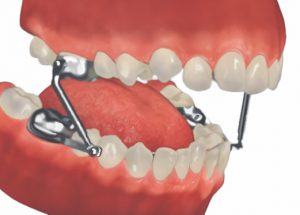
Step-by-Step Process of Getting a Herbst Appliance
Consultation and Treatment Planning
The first step in getting a Herbst appliance is a consultation with an orthodontist. During this consultation, your orthodontist will discuss your concerns, examine your jaw alignment and dental structures, and determine if a Herbst appliance is the right treatment option for you. They will explain the treatment process, answer any questions you may have, and provide a treatment plan tailored to your specific needs.
Impressions and Creation of Customized Herbst Appliance
Once you have decided to proceed with the treatment, your orthodontist will take dental impressions, X-rays, and photographs of your teeth and jaws. These records will be used to create a customized Herbst appliance that fits precisely to your teeth and jaw structure. The appliance will be fabricated in a dental laboratory, ensuring a perfect fit and optimal effectiveness.
Fitting and Adjustments
When your customized Herbst appliance is ready, you will return to your orthodontist’s office for the fitting appointment. During this appointment, the appliance will be carefully attached to your upper and lower teeth using bands or brackets. Your orthodontist will make any necessary adjustments to ensure proper fit and functionality. They will also provide instructions on how to care for and maintain your Herbst appliance properly.
Monitoring and Maintenance
Throughout the course of your Herbst orthodontic treatment, regular monitoring appointments will be scheduled with your orthodontist. These appointments allow your orthodontist to assess the progress of your treatment, make any necessary adjustments to the appliance, and address any concerns or discomfort you may experience. It is essential to attend these appointments as scheduled to ensure the success of your treatment.
Possible Discomfort or Side Effects
Temporary Soreness and Tenderness
As with any orthodontic treatment, it is not uncommon to experience temporary soreness and tenderness initially after the placement of a Herbst appliance. This discomfort may be felt in the jaw muscles, teeth, or gums and typically subsides within a few days as your mouth adjusts to the appliance. Over-the-counter pain relievers, as recommended by your orthodontist, can help alleviate any discomfort.
Difficulties with Speech or Eating
Adjusting to a Herbst appliance may temporarily affect your speech and eating habits. It may take a few days or weeks to adapt to the appliance, and you may experience difficulties pronouncing certain sounds or eating certain types of food. However, with practice and patience, most individuals adjust to the appliance and regain their normal speech and eating abilities.
Maintenance and Cleaning Challenges
Proper maintenance and cleaning of a Herbst appliance are vital to ensure its effectiveness and prevent any oral health issues. The appliance needs to be cleaned daily using a soft toothbrush and non-abrasive toothpaste. It is also essential to maintain good oral hygiene by brushing and flossing your teeth regularly. Your orthodontist will provide you with specific instructions on how to clean and care for your Herbst appliance.
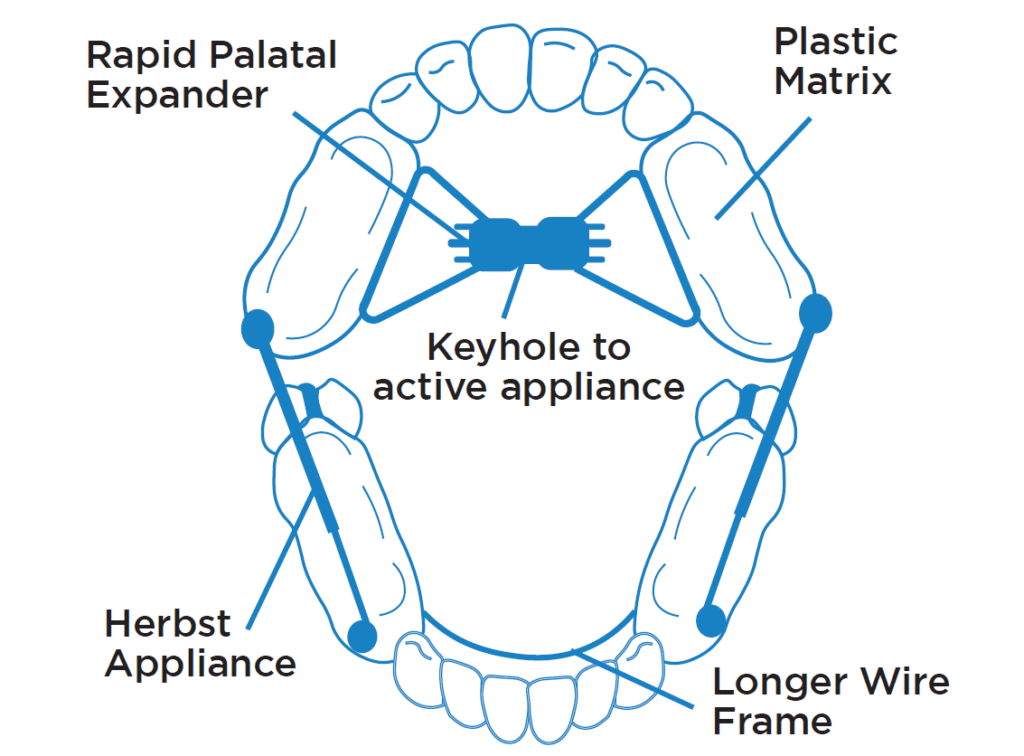
Tips for Managing Discomfort and Adjusting to the Appliance
Taking Over-the-Counter Pain Relievers if Recommended
If you experience any discomfort or soreness after the placement of your Herbst appliance, your orthodontist may recommend taking over-the-counter pain relievers to alleviate the symptoms. These medications can help reduce inflammation and relieve mild to moderate pain. However, always follow your orthodontist’s instructions and consult a healthcare professional if you have any concerns or questions.
Eating Soft Foods and Chewing Slowly
During the initial adjustment period, it may be helpful to stick to soft foods that require minimal chewing. This allows your mouth to adapt to the appliance and reduces the risk of discomfort while eating. As you become more comfortable with the Herbst appliance, gradually introduce firmer foods, chewing slowly and carefully to avoid any unnecessary strain on your jaws.
Practicing Proper Oral Hygiene
Maintaining proper oral hygiene is crucial when wearing a Herbst appliance. Be sure to brush your teeth thoroughly, taking extra care around the appliance and the gum line. Flossing regularly is also important to remove any food particles or debris that may get trapped around the appliance. Following a consistent oral hygiene routine helps prevent tooth decay, gum problems, and unwanted complications.
Communicating Clearly and Adjusting Speech Patterns
While adjusting to a Herbst appliance, you may find it initially challenging to pronounce certain sounds due to the presence of the appliance in your mouth. Practice speaking slowly and clearly, and give yourself time to adjust to any changes in speech. Over time, your mouth muscles will adapt, and your speech patterns will become more natural.
Duration of Herbst Orthodontic Treatment
Treatment Length and Progress
The duration of Herbst orthodontic treatment varies depending on the severity of the jaw misalignment and the individual’s response to the treatment. On average, treatment with a Herbst appliance can range from 9 to 18 months. Regular monitoring appointments with your orthodontist will allow them to track your progress and make any necessary adjustments to ensure optimal treatment outcomes.
Post-Treatment Retention
After the completion of Herbst orthodontic treatment, it is essential to maintain the results achieved. Your orthodontist may recommend the use of a retainer to help retain the corrected jaw alignment and bite. Retainers are typically worn at night and play a vital role in preventing relapse and preserving the treatment outcome.
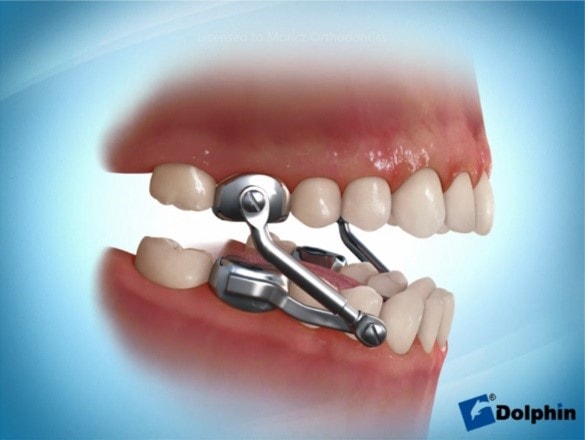
Potential Alternatives to Herbst Orthodontic Treatment
Traditional Orthodontic Braces
Traditional orthodontic braces are an alternative treatment option for correcting jaw misalignment. Braces consist of brackets and wires that apply gentle pressure to move the teeth and jaws into their correct positions. While braces are effective, the treatment duration may be longer compared to using a Herbst appliance.
Orthodontic Headgear
Orthodontic headgear is another alternative for treating jaw misalignment, particularly Class II malocclusion. The headgear consists of a facebow, which attaches to bands on the back teeth, and straps that are worn around the head or neck. The headgear applies external forces to the upper jaw, helping it gradually move into the proper position.
Orthognathic Surgery
In severe cases of jaw misalignment or when other treatment options are not feasible, orthognathic surgery may be considered. This surgical procedure involves repositioning the jaws to achieve proper alignment. It is typically performed in conjunction with orthodontic treatment to achieve optimal results.
Cost Considerations and Insurance Coverage
Average Cost of Herbst Appliance Treatment
The cost of Herbst orthodontic treatment can vary based on factors such as the complexity of the case, geographical location, and individual orthodontist fees. On average, the cost for Herbst appliance treatment ranges from $2,500 to $6,500. It is important to consult with your orthodontist for an accurate estimate based on your specific needs and circumstances.
Insurance Coverage and Flexible Spending Accounts
Many dental insurance plans cover a portion of orthodontic treatment costs, including Herbst appliance treatment. However, the extent of coverage may vary depending on your insurance provider and plan. It is advisable to contact your insurance company directly to understand their coverage policies and determine the amount of coverage you may be eligible for. Additionally, flexible spending accounts (FSA) or health savings accounts (HSA) can be used to cover orthodontic expenses, potentially providing financial flexibility.
Payment Plans and Financing Options
Orthodontic practices often offer various payment plans and financing options to make Herbst appliance treatment more affordable. These may include monthly installment plans, discounts for upfront payment, or financing through third-party companies specializing in orthodontic funding. Discuss the available options with your orthodontist and choose the one that best suits your financial situation.
In conclusion, a Herbst orthodontic appliance is a specialized device used to correct jaw misalignment and improve bite functionality. With various components and a step-by-step process, it effectively aligns the upper and lower jaws, leading to numerous benefits such as improved facial symmetry, reduced risk of TMJ disorders, and enhanced bite function. Eligibility for treatment is determined through an initial examination and evaluation of the severity of jaw misalignment. While some discomfort and adjustments are expected, managing them through proper care and communication can ease the transition. Treatment duration varies, and alternatives such as traditional braces, orthodontic headgear, or orthognathic surgery may be considered. Cost considerations can be addressed through insurance coverage, flexible spending accounts, payment plans, or financing options. Overall, a Herbst orthodontic appliance can be a valuable tool in correcting jaw misalignment and improving oral health and facial aesthetics.
